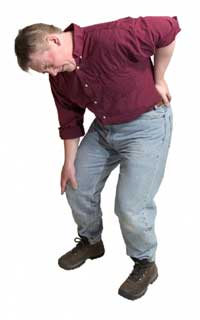
A good chair is required for the health of office workers sitting all day
Office workers frequently suffer from job-related aches and pain, such as stiff necks, aching backs, sore behinds as well as eye-strain and carpal tunnel syndrome if they are computer users.
Many of the problems are associated with sitting all day long. If you are required to sit for 40 hours a week, then you must make the best of the situation, which requires that you implement ergonomic practices.
Ergonomics is, essentially, a science that delves into the way people use and move their bodies when they work, including the environment they are in and the equipment that is utilized. The goal of ergonomics is to prevent a person from getting injured, and this is achieved by using tools and equipment that are beneficial to a person?s health rather than detrimental.
It was discovered that contoured seats, including car seats, office seats and even toilet seats, are responsible for a lot of the hip pain that individuals suffer. When the contour is removed, buttock pain is diminished.
The reason contoured seats may not be good for your health is that they can be far too curved to suit the natural curve of the body and this puts pressure on nerves, tendons, cartilage, bones and skin when sitting for long periods of time. Additionally, when sitting in a contoured chair, this mandates rotation of the upper legs.
As those who sit for hours on end can attest, this can eventually alter the natural alignment of the body because the body alignment becomes distorted, which causes pain in the hip.
Ideally, an office chair should offer support to your back and legs as well as to your arms and buttock. An ergonomically designed chair reduces the likelihood of the sitter getting into awkward positions as well as lessens forceful exertions and contact stress.
~
An ergonomically designed chair provides support for the sitter as well as enables a person to sit in a variety of positions without hurting himself.
If you are in the market for a chair that is going to provide comfort and support while on the job, look for one that has a serviceable back rest, which offers support to the lumbar and maintains the natural S-shape of the spine. The outward curve of the backrest must fit the curve of the sitter?s back. When your chair doesn?t provide you with adequate back support this can result in fatigue and back pain.
An ergonomically designed chair will provide lumbar support to your lower back, which helps maintains the natural curve of the spine.
The backrest should be adjustable, and allow the user to recline at 15 degrees from the vertical.
Ideally, the backrest can be moved forward and backward, which is helpful for those who aren?t tall and need to prevent the front edge of the seat from coming into contact with the back of their knees.
The seat (or seat pan) should not restrict movement, provide support and be large enough to accommodate big hips. When a seat pan is too short, this puts pressure on the knee area of those individuals who are short. It lessens the amount of back support that is provided. A too-small seat pan can also restrict blood flow to the legs.

